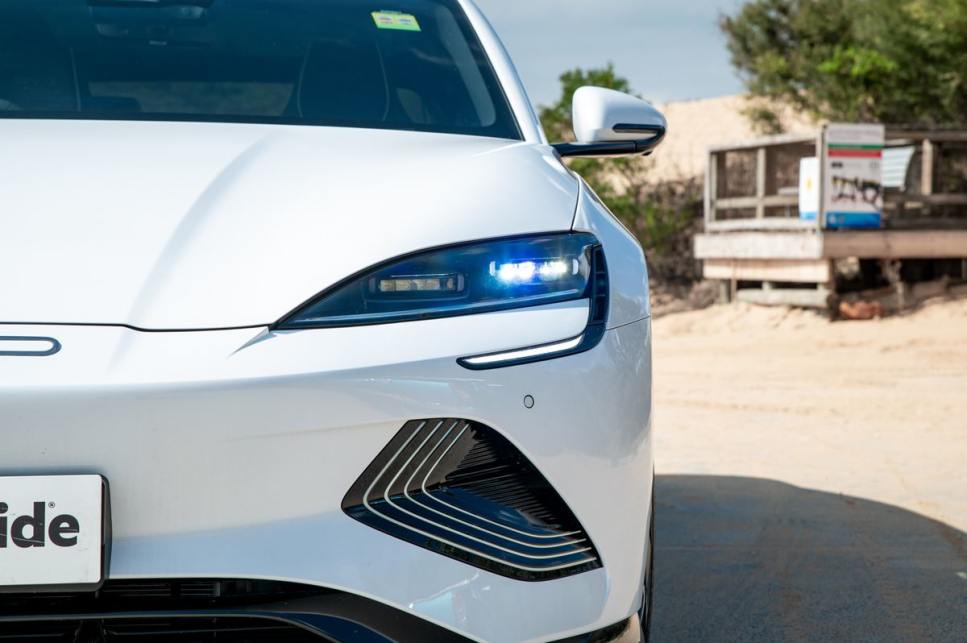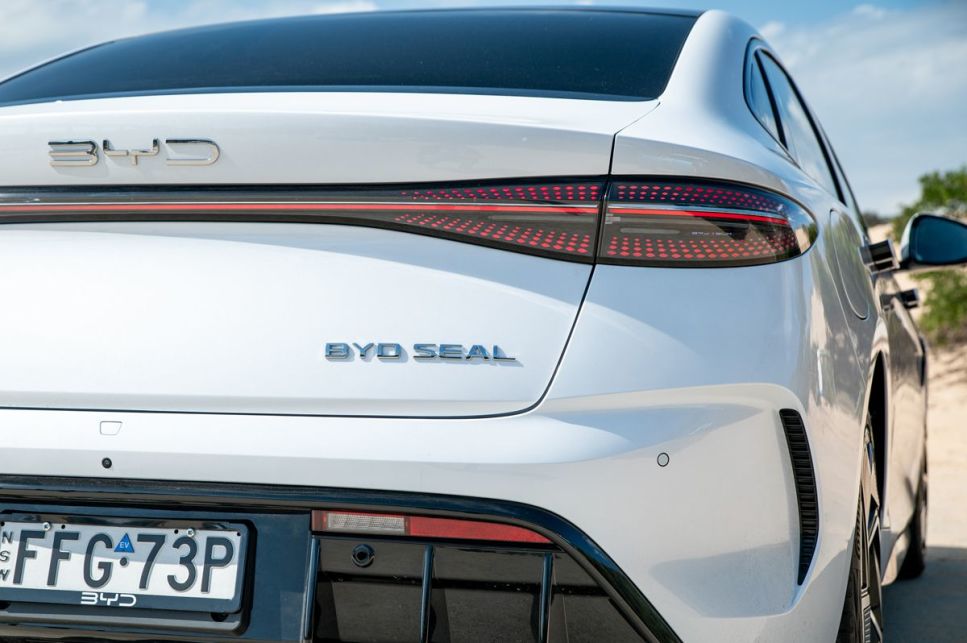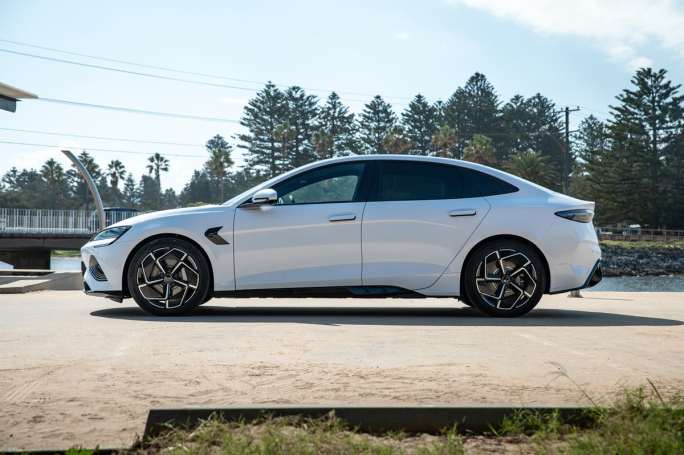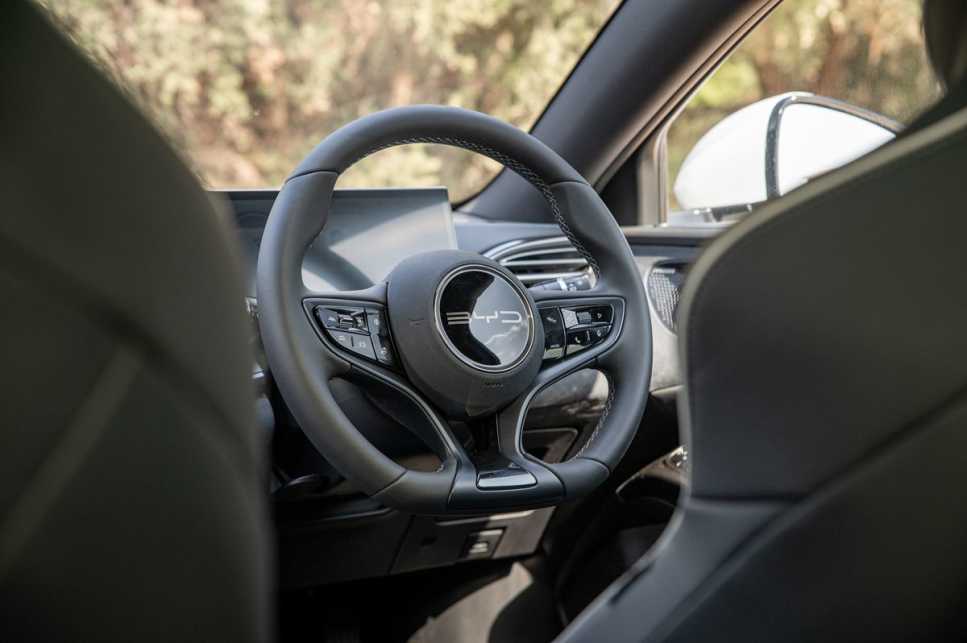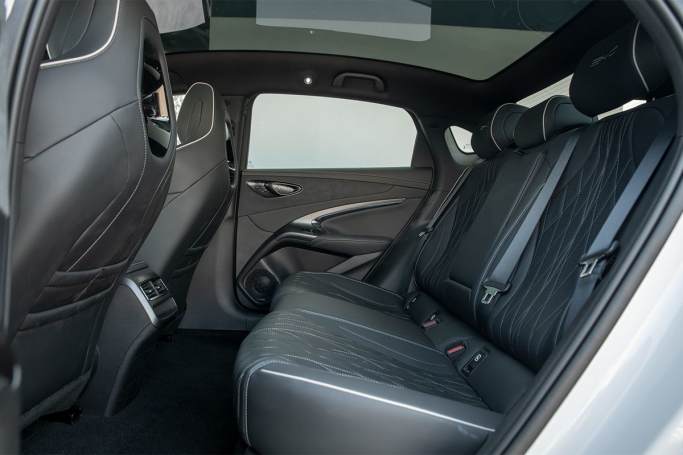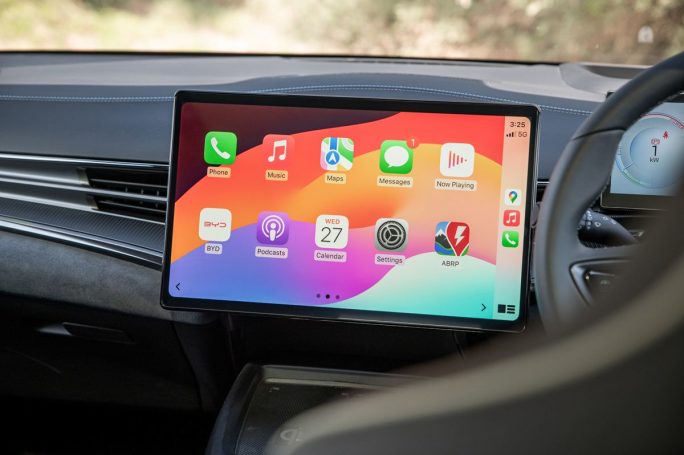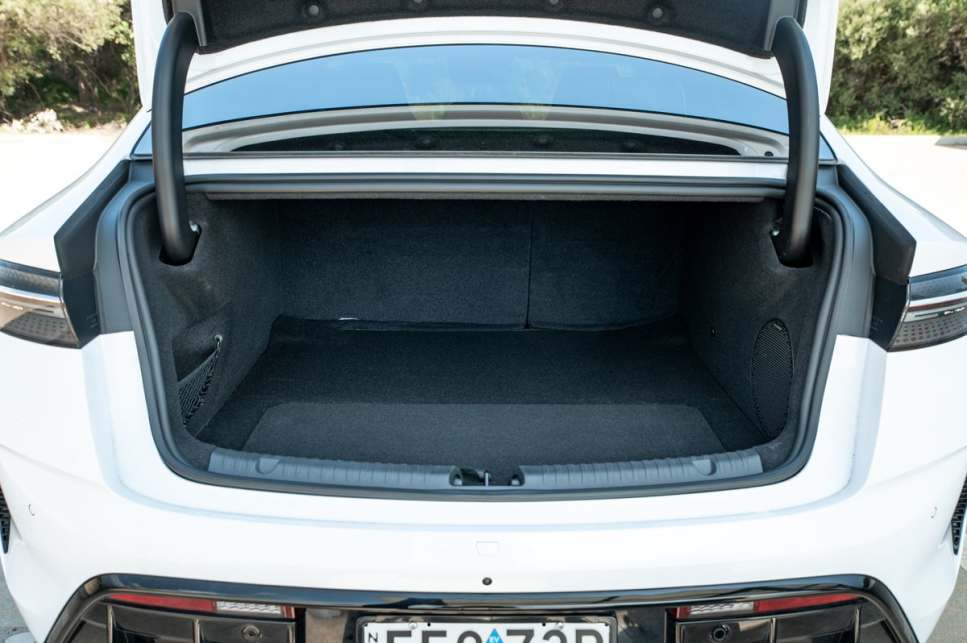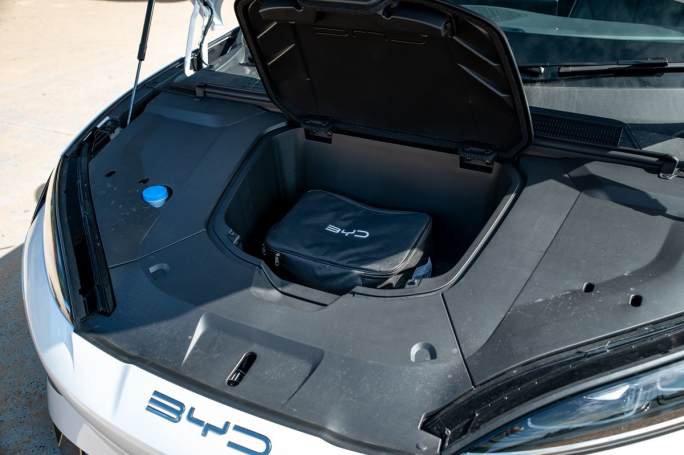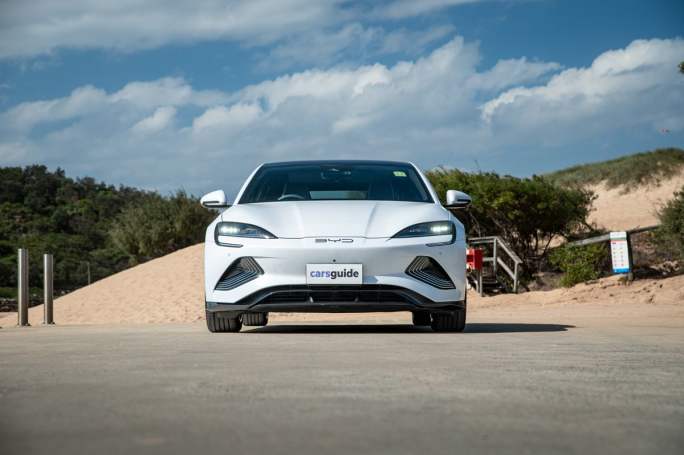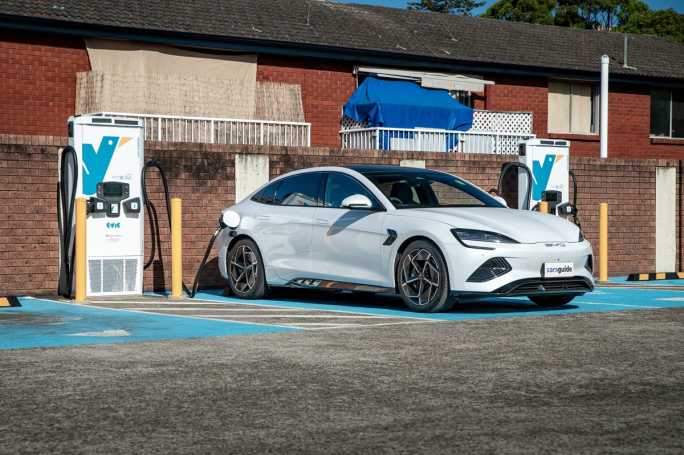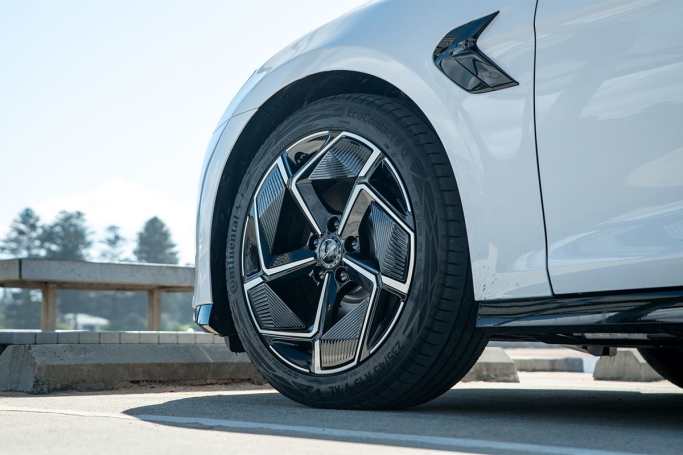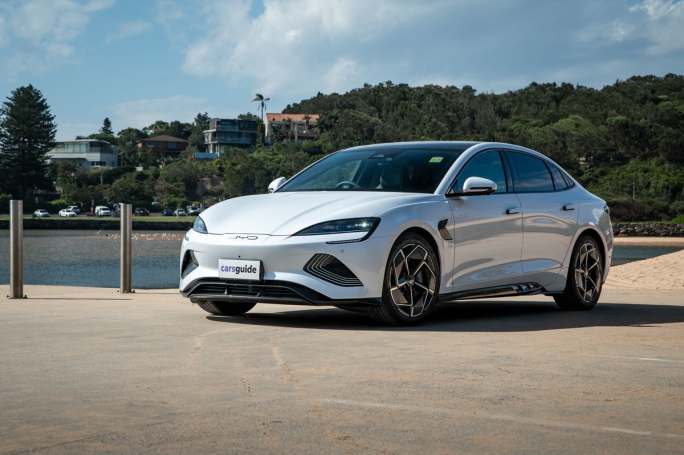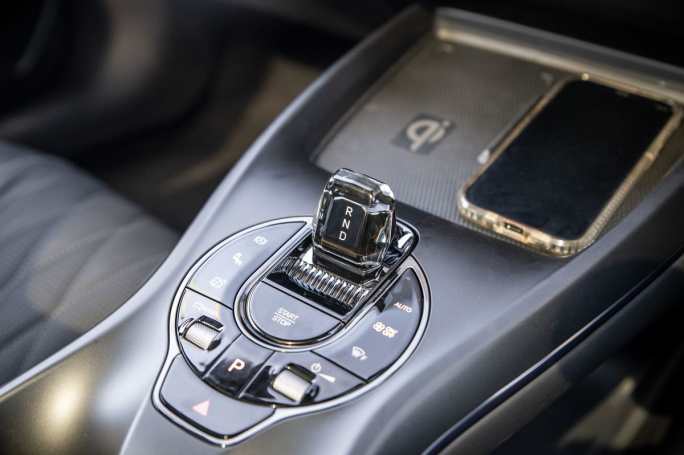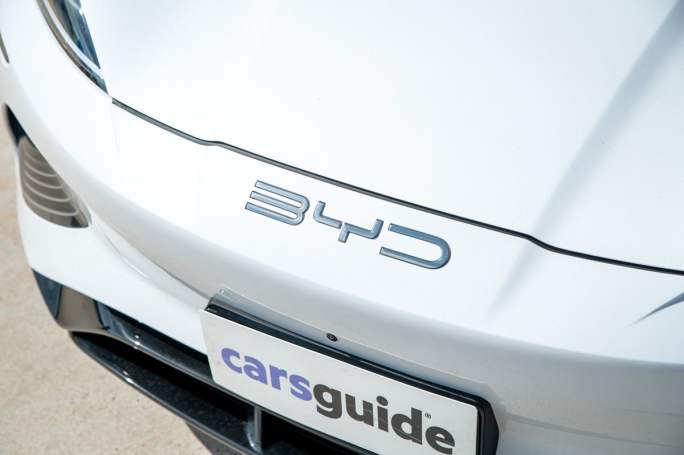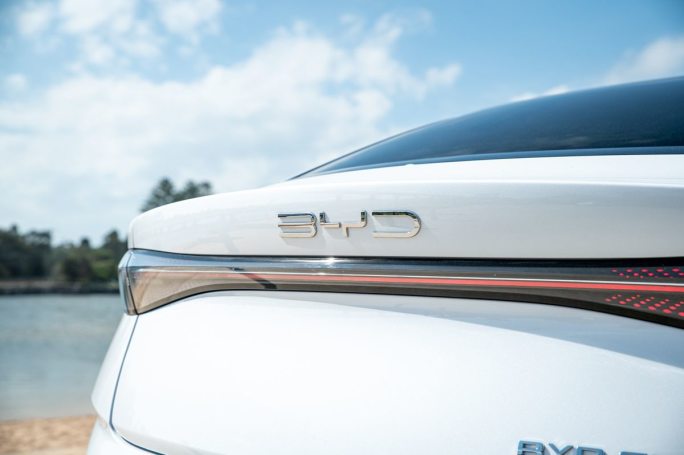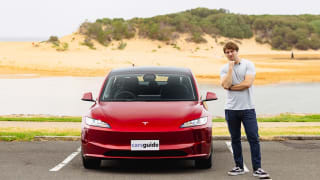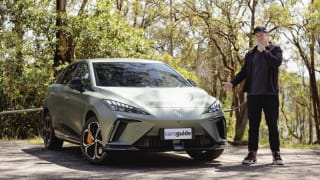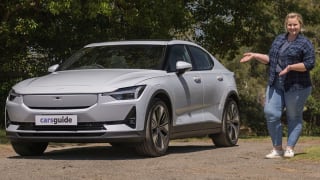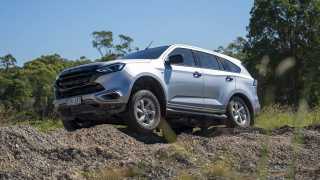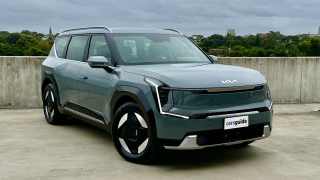Just like its Model 3 rival, the Seal arrives in Australia in three variants - the base Dynamic, top-spec Performance, and the one we’re looking at for this review, the mid-spec Premium.
Price is, of course, BYD’s forte, with this mid-spec Premium (equipped with a long-range battery) even managing to undercut the entry-level Model 3 RWD.
Before on-road costs and state-based incentives you can have one of these from $58,798, while (at the time of writing at least) the enormously popular Model 3 RWD weighed in at $61,900. Its next closes rival, the Polestar 2 Standard Range, costs from $67,400, so value here is obvious.
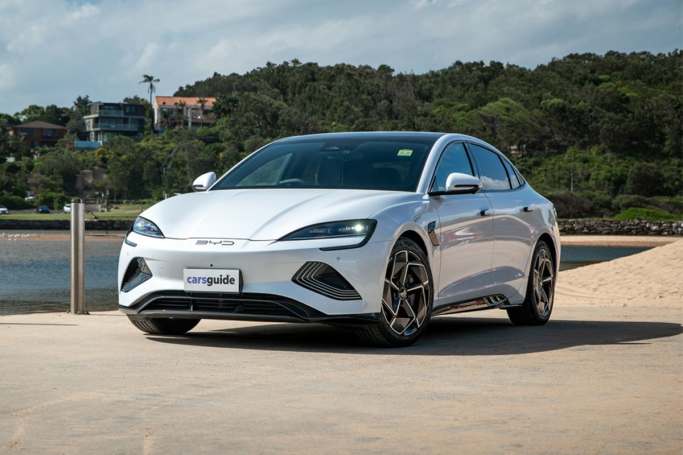
The Premium’s long-range battery allows a WLTP-certified driving range of 570km between charges which is even one of the longest cruising ranges available on any electric vehicle in Australia right now.
The list of standard features is exhaustive, including 19-inch alloy wheels, LED headlights, a massive 15.6-inch multimedia touchscreen with wired Apple CarPlay and wireless Android Auto, a 10.25-inch digital instrument cluster, a holographic head-up display, dual wireless phone charging bays, built-in navigation and connected services, ‘genuine’ leather seat and wheel trim (a blend of synthetic and real leather), an eight-way power-adjustable seat for the driver, ventilated and heated front seats, dual-zone climate control, a fixed panoramic glass roof and keyless entry with push-start ignition.
The Seal also gets an impressive array of standard safety kit. More on this later.
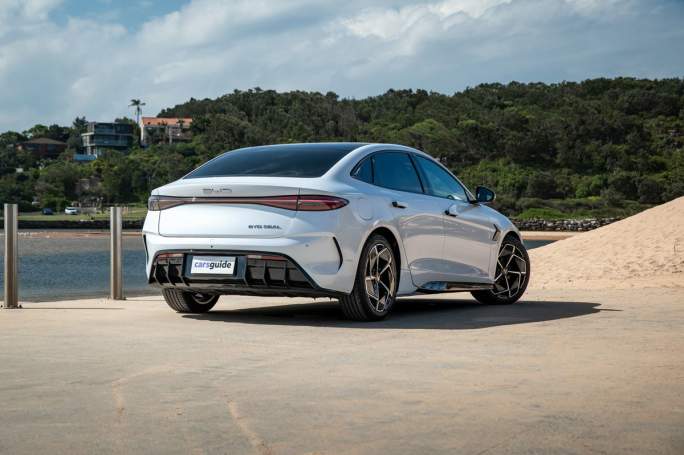
The only options are premium paints and an alternate light blue theme for the interior which cost $1500 each.
This list of kit would even be impressive on a combustion car at this price, so the fact it’s also electric and offers one of the longest driving ranges on the market is a bonus.
The one area where I think it lacks a little is the stock software. It looks okay and, to be fair, functions a lot better than its Chinese contemporaries and even some other brands, but once you dig into it a little there are some clumsy menus, and it becomes painfully obvious it’s a simple Android reskin. A swing and almost a miss for something so integral to a car like this.
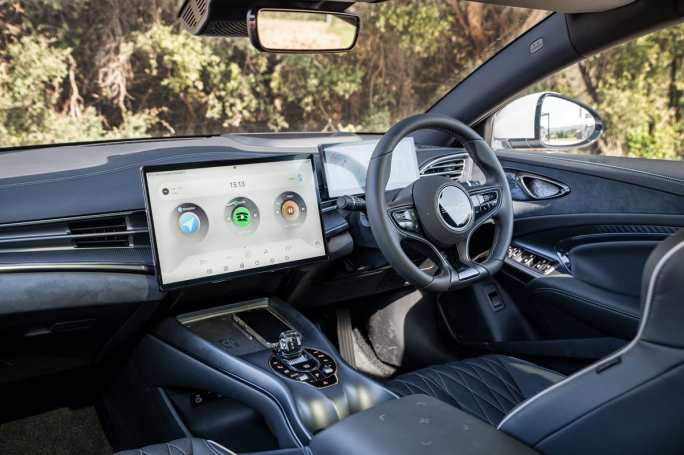
Why is it called the Seal? Well, in BYD’s home market of China, its range is so expansive it has split it up into two model lines, the Dynasty series (named after historical Chinese kingdoms) of which the Atto 3 is a member (it is called the Yuan Plus in China), and the Ocean series which the Seal and Dolphin belong to. The next BYD to arrive in Australia, a mid-size SUV likely to be called the Seal U, also belongs to the Ocean series.



